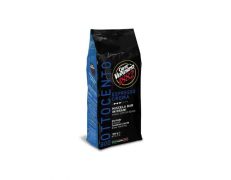Processing methods significantly influence coffee beans’ ultimate flavor profile, aroma, and quality. Transforming ripe cherries plucked from coffee trees into ready-to-roast seeds involves multiple stages, each impacting the final product’s sensory attributes. Generally, three main approaches of coffee beans in Abu Dhabi govern coffee cherry handling post-harvest: dry, wet, and honey processing.
Dry processing (Natural Method):
Employed predominantly in areas with limited water availability or traditionalist producers, dry processing represents the simplest, oldest technique. After careful sorting and spreading cherries uniformly on raised platforms or concrete patios, workers periodically turn them to promote even drying under direct sunlight. Cherries undergo anywhere from ten days to three weeks of sun exposure until achieving target moisture contents below 12%. Once adequately dried, husks are mechanically removed, revealing green coffee beans coated lightly with remaining sticky residue called parchment. Due to prolonged contact between pulp and bean, natural process coffees express intense fruity, fermented, and sometimes funky flavors attributable to their extended interaction with native yeasts and bacteria populations.
Wet processing (Washed Method):
Contrasting sharply with the previous approach, wet processing separates cherries’ outer layers immediately upon arrival at mills. Machinery crushes cherries, forcing mucilaginous pulp to pass through small holes retaining intact beans inside. Subsequent immersion in water tanks facilitates density segregation, wherein lighter floaters containing defective beans get discarded while heavier sinkers progress further. Fermentation follows suit, allowing microorganisms to break down residual mucilage clinging onto parchment-encased beans for 12-72 hours, depending on ambient temperature and desired outcomes. Clean, crisp, transparent flavors typify washed coffees, accentuating origin-specific acidity, clarity, and balance.
Honey processing (Pulped Natural Method):
Honey processing occupies a middle ground between dry and wet methods, partially preserving cherries’ fleshy components while expediting drying phases. Following initial depulping steps identical to wet processing, operators leave behind variable amounts of mucilage adhering to beans prior to setting them out for solar drying. Labels designating precise degrees of mucilage retention range from white (minimal), yellow, red, to black (maximum), correlating directly with increasing sweetness, viscosity, and fruit-forward characters. Intermediate moisture levels necessitate heightened vigilance throughout drying periods, averting mold growth and spoiled batches.
In summary, comprehending coffee bean processing techniques empowers consumers to distinguish between distinct sensory attributes linked to varied handling procedures. Whether captivated by wild, untamed naturals; clean, articulate washed profiles; or intriguingly balanced hybrids, appreciating the artistry involved in transforming fresh cherries into delectable sippers fosters deeper engagement and appreciation for this versatile beverage.



